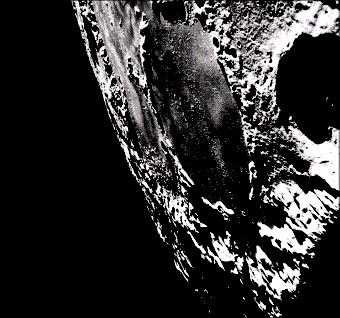77. Dissolved Metals
Rivers carry dissolved elements, such as copper, gold, lead, mercury, nickel, silicon, sodium, tin, and uranium into oceans at very rapid rates when compared with the small quantities of these elements already in the oceans. In other words, far fewer than a million years’ worth of metals are dissolved in the oceans.a There is no known means by which large amounts of these elements can come out of solution. Therefore, the oceans must be much younger than a million years.

Figure 32: Young Craters. Large craters on the Moon have high, steep walls that should be slowly slumping and deep floors that should be bulging upward. Little deformation exists, so these craters appear relatively young. Similar conclusions can be drawn for Venus and Mercury.